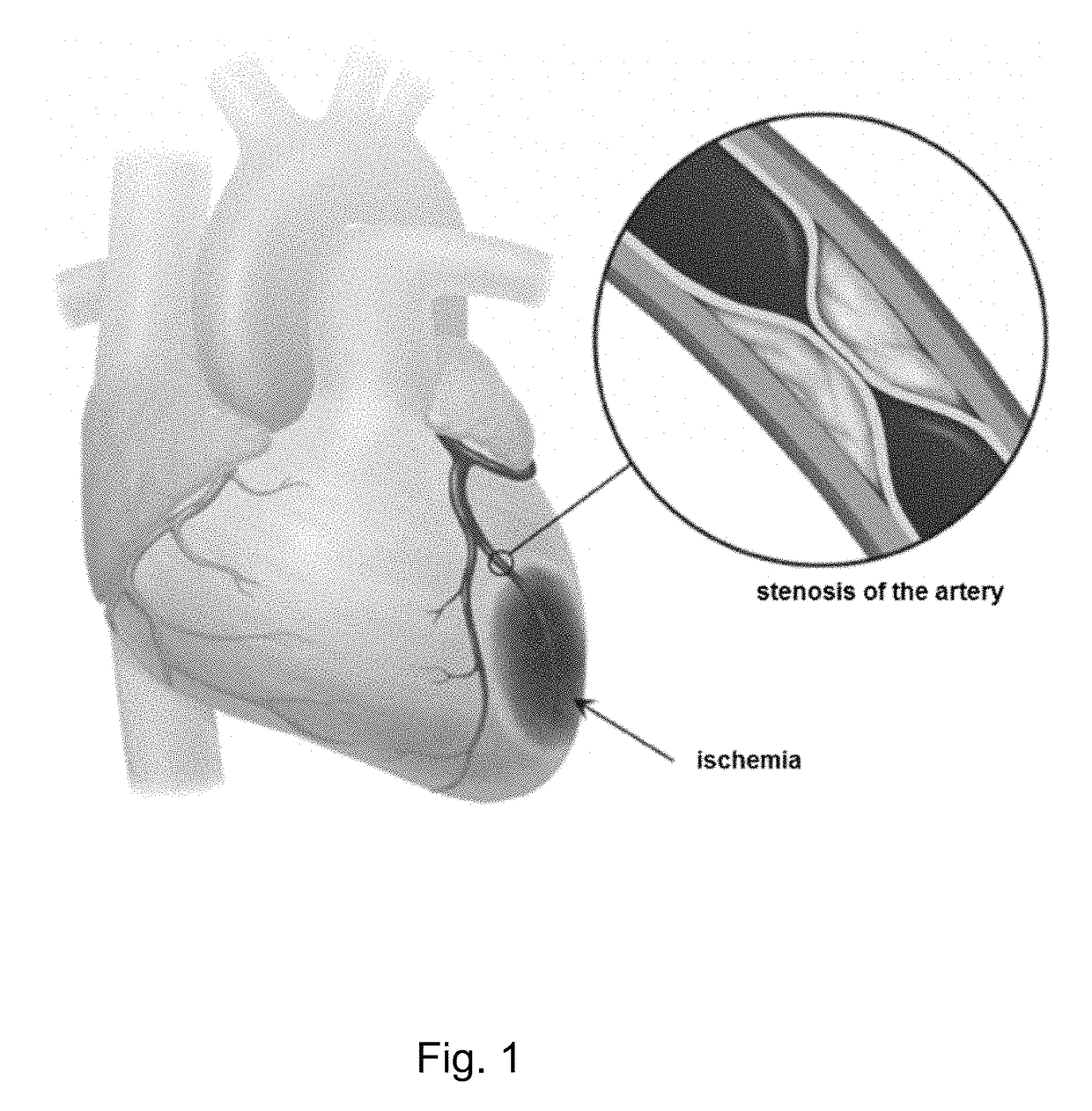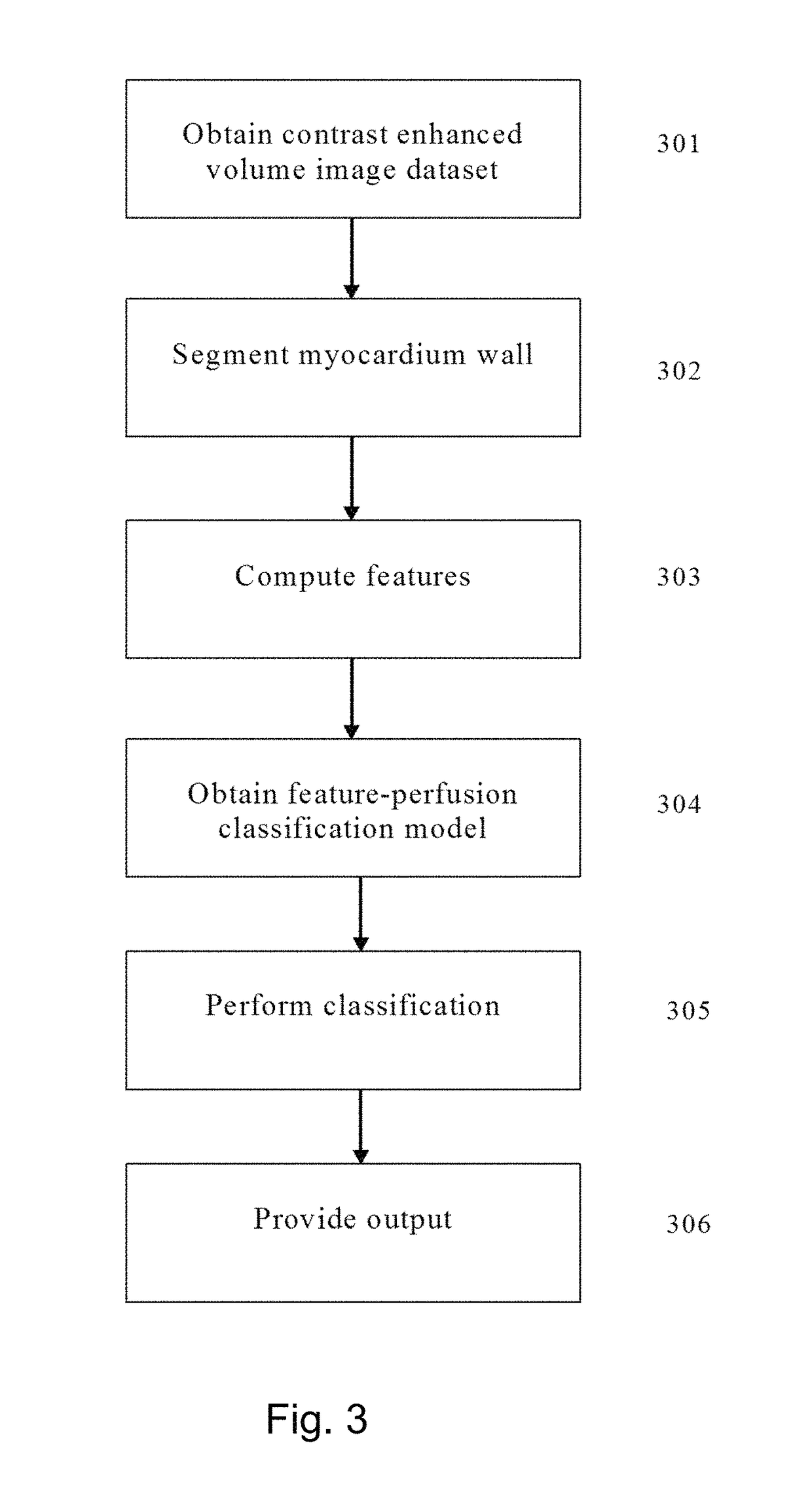Method and system for assessing vessel obstruction based on machine learning
a machine learning and vessel technology, applied in the field of methods and systems to assess the severity of vessel obstruction, can solve the problems of reduced oxygen supply to the myocardium, ischemia and chest pain, and physiological significance of atherosclerotic lesions
- Summary
- Abstract
- Description
- Claims
- Application Information
AI Technical Summary
Benefits of technology
Problems solved by technology
Method used
Image
Examples
Embodiment Construction
[0074]The term “unseen”, as used throughout, refers to “non-training” items. For example, an unseen image is not a training image, an unseen feature is not a training feature. Instead, the unseen features, images, geometries and other unseen items refer to aspects of a patient or object of interest that is being analysed during the prediction phase of operation.
[0075]The present application relates to a method and system for machine learning to assess the hemodynamic functional severity of one or more vessel obstructions of a target organ based on contrast enhanced volumetric image dataset. In a preferred embodiment, the target organ represents the myocardium and the vessels the coronary arteries. A functionally significant stenosis is a hemodynamically significant obstruction of a vessel, and with respect to coronary arteries it defines the likelihood that coronary artery obstruction(s) impedes oxygen delivery to the heart muscle and causes anginal symptoms. Fractional flow reserve...
PUM
 Login to View More
Login to View More Abstract
Description
Claims
Application Information
 Login to View More
Login to View More - R&D
- Intellectual Property
- Life Sciences
- Materials
- Tech Scout
- Unparalleled Data Quality
- Higher Quality Content
- 60% Fewer Hallucinations
Browse by: Latest US Patents, China's latest patents, Technical Efficacy Thesaurus, Application Domain, Technology Topic, Popular Technical Reports.
© 2025 PatSnap. All rights reserved.Legal|Privacy policy|Modern Slavery Act Transparency Statement|Sitemap|About US| Contact US: help@patsnap.com



